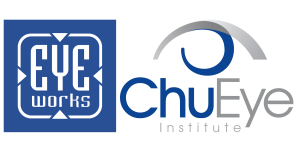Poor vision in adults or children can be the result of a number of conditions including anatomical changes or abnormalities in the eye or visual system, eye diseases, side effects of medication or eye injuries. Many people also experience visual disturbances associated with age or eye stress that can result in changes in your vision which can make it uncomfortable or difficult to perform everyday activities such as reading or looking at a computer screen for long periods. Common signs and symptoms of these types of vision problems include eyestrain, headache, blurred vision, squinting and trouble seeing from short or long distances.
Blurred vision is one of the most common signs of a vision problem. If you have blurred vision when you are looking at distant objects you may be nearsighted, or myopic. Blurred vision that's present when you are looking at objects at a close range may be a sign of farsightedness, or hyperopia. Blurred vision can also be a sign of an astigmatism due to an irregularity in the shape of the cornea, or sometimes the curvature of the lens inside the eye. In all cases of blurry vision it is essential to have your eye doctor examine your eyes and prescribe you a solution to help clarify your sight.
A sudden onset of flashes of light often combined with black floating spots and the sensation of a dark curtain or veil blocking a portion of your vision indicates you might have a retinal detachment. In this case visit your eye doctor promptly as this can have serious consequences for your vision.
Another common warning sign of a vision problem is difficulty distinguishing shades or intensity of color, which is an indication of color perception problem or color blindness. Color vision defects are usually unknown to the patient until discovered by testing and are mainly found in males. If present in a female it may represent ocular disease and an optometrist should be consulted. If you have difficulty distinguishing objects in dim light, it is a sign of possible night blindness.
Cataracts can have a number of warning signs which include: hazy vision that is worse in bright light, weak night vision, difficulty discerning movements, details, or objects, the need for brighter light when reading, colors that appear faded or yellowed, unexpected improvement in near vision while distance vision worsens, double or triple vision in one eye only, a milky white or opaque appearance to the normally dark pupil and painful inflammation in the eye. Throbbing eye pain, headaches, blurred vision, redness in the eye, rainbow halos around lights, nausea and vomiting are also signs of an acute medical illness, glaucoma and require immediate medical attention.
In children, it is important to watch for discoordinated eye movements, or eyes that cross in or out which could indicate a vision problem known as strabismus. Young children with vision problems such as this may rub one or both eyes frequently and may squint, tilt their heads, or close one eye in order to see things better.
If you experience any of the symptoms mentioned here visit your eye doctor as soon as possible. While clearly some conditions are more serious than others, any disruption in clear vision can be a burden and impact your quality of life. A quick visit to your optometrist can save you from unnecessary discomfort or even more severe eye and vision damage.








Leave a Reply